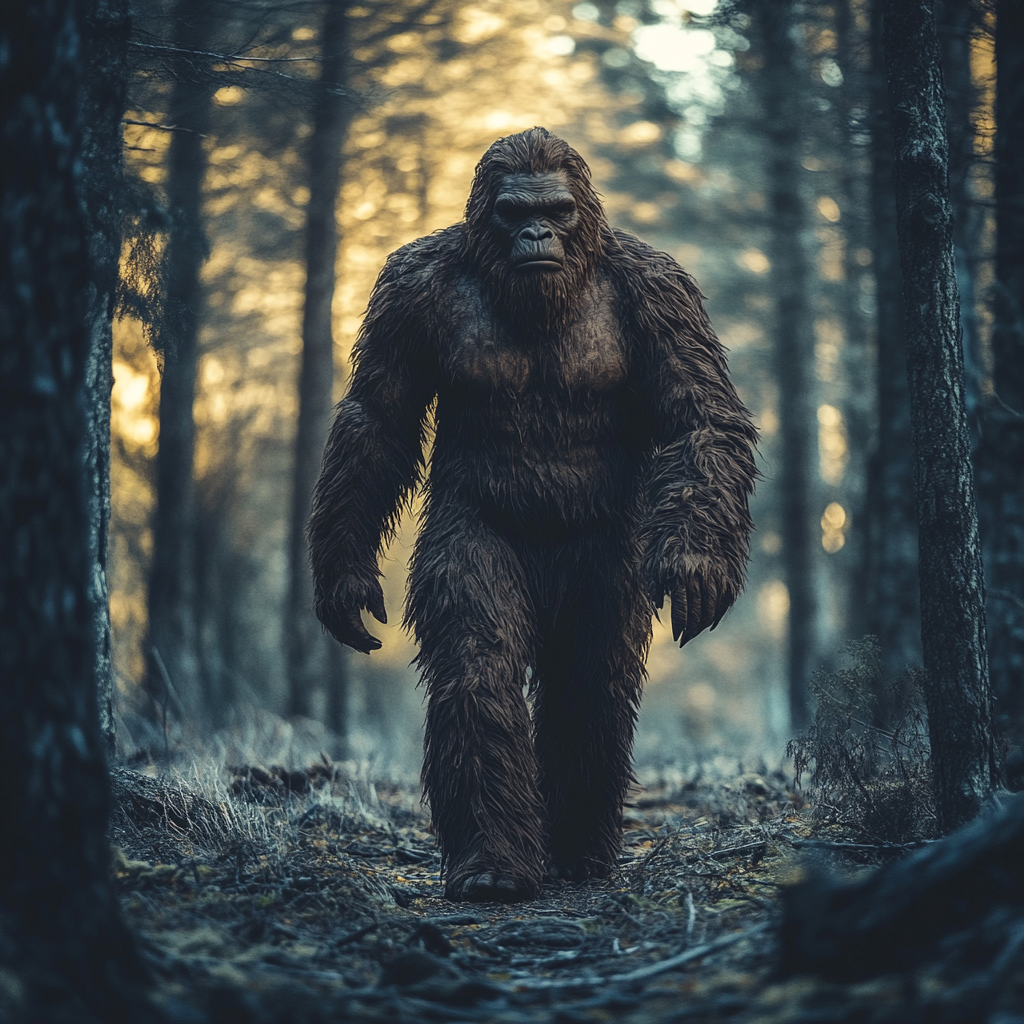For centuries, the enigmatic figure of Sasquatch has captured the imagination of millions. Often depicted as a towering, hairy humanoid lurking in remote forests, this creature is the subject of countless debates, legends, and investigations. While skeptics dismiss the creature as a figment of imagination, enthusiasts believe in its existence, fueled by stories passed down through generations and modern-day accounts. Sasquatch, also known as Bigfoot, isn’t just a pop culture phenomenon; it is deeply ingrained in the folklore of various cultures.
This article aims to separate fact from fiction by exploring and debunking the most persistent myths about Sasquatch. From claims of superstition to dismissals of all evidence, these myths often overshadow meaningful discussions about what Sasquatch represents. By addressing them, we hope to provide a clearer perspective on this elusive figure and its enduring allure.
Myth 1: Sasquatch Is Just a Superstition
The idea that Sasquatch is nothing more than a superstition has persisted for decades. Critics often argue that belief in such creatures is based on folklore rather than factual evidence. However, this view ignores the substantial number of eyewitness accounts and the scientific curiosity surrounding the phenomenon.
Eyewitness reports, often dismissed as hoaxes, are surprisingly consistent. Across North America, individuals have described similar features: a tall, bipedal figure covered in dark fur with human-like facial features. Skeptics may dismiss these stories as fabrications, but the uniformity of these accounts over centuries suggests a deeper mystery. Moreover, many witnesses are credible individuals, such as police officers and outdoor enthusiasts, who have little to gain from fabricating such stories.
Scientific investigations have also challenged the notion of Sasquatch as mere superstition. Anthropologists and cryptozoologists have explored the possibility that the creature may be a relic population of hominids or an undiscovered primate species. While definitive proof remains elusive, the persistence of this phenomenon across cultures and timeframes indicates that it may be more than just a myth.
Myth 2: All Evidence Is Fake
Perhaps the most common argument against Sasquatch’s existence is the claim that all evidence is fabricated. Skeptics point to infamous hoaxes and doctored photographs as proof that the entire phenomenon is a sham. While it’s true that some cases have been debunked, dismissing all evidence as fake ignores the complexity and scope of the available material.
Consider the famous Patterson-Gimlin film, captured in 1967. Despite decades of scrutiny, this footage has not been definitively disproven. Experts in biomechanics have analyzed the creature’s gait, suggesting that its movements are inconsistent with a human in a costume. Additionally, the sheer volume of footprints discovered worldwide raises questions. Some of these prints feature dermal ridges and other details that are difficult to fake convincingly.
Moreover, dismissing evidence as fake overlooks the testimonies of indigenous communities, whose stories of Sasquatch predate modern hoaxes by centuries. From detailed carvings to oral traditions, these accounts offer a rich tapestry of evidence that goes beyond physical artifacts. While hoaxes do exist, they should not overshadow the broader body of evidence pointing to the possibility of an undiscovered species.
Myth 3: Sasquatch Is Just a Large Ape
A common misconception is that Sasquatch is simply a misidentified large ape, such as a bear or a gorilla. While this theory might seem plausible at first glance, it fails to account for the unique characteristics attributed to Sasquatch and the differences from known species.
Unlike apes, Sasquatch is consistently described as bipedal, walking upright like a human. The footprints attributed to the creature also differ significantly from those of apes or bears. They exhibit unique features such as a midtarsal break, which is uncommon in both humans and other primates. This detail has intrigued anthropologists, as it suggests a creature adapted to traversing rugged terrain.
Furthermore, reports of Sasquatch behavior do not align with known ape behaviors. Witnesses describe the creature as highly elusive, avoiding human contact and displaying intelligence akin to early hominids. While apes are social and often seen in groups, Sasquatch is typically reported as solitary, further distinguishing it from known species. These differences suggest that if Sasquatch exists, it is neither an ape nor a bear but something entirely unique.
Myth 4: Sasquatch Legends Are Exclusively an American Phenomenon
Many people assume that Sasquatch legends are a uniquely American creation, popularized by Hollywood and local folklore. However, similar myths exist across the globe, indicating that the idea of a large, mysterious humanoid is not confined to North America.
In Asia, the Yeti, or “Abominable Snowman,” shares striking similarities with Sasquatch. This creature, often reported in the Himalayas, is described as a tall, fur-covered being that leaves behind large footprints. Similarly, in Australia, the legend of the Yowie tells of a large, hairy creature that roams the outback. These stories, like those of Sasquatch, are deeply rooted in indigenous cultures and predate modern media.
Europe also has its share of Sasquatch-like legends. The Almas of Central Asia and the Woodwose of medieval England bear remarkable resemblances to Sasquatch. These creatures, often depicted as wild men or forest dwellers, further support the idea that the concept of Sasquatch is a global phenomenon. By exploring these cross-cultural parallels, we gain a deeper understanding of the universal human fascination with the unknown.
What We’ve Learned
To summarize, debunking the myths about Sasquatch reveals the following:
- Eyewitness accounts and scientific curiosity challenge the idea that Sasquatch is merely a superstition.
- Not all evidence is fake; some remains compelling and unexplained.
- Sasquatch differs significantly from known species, suggesting it is not just a large ape.
- Similar myths around the world highlight Sasquatch as a universal symbol of mystery.
These points remind us that while skepticism is healthy, dismissing Sasquatch outright ignores the richness of the evidence and cultural significance surrounding it. Finally, we recommend that you read our other article, which tells the truth behind the popular myths about meeting bigfoot.
FAQ
No, while some are hoaxes, many credible reports remain unexplained.
No, similar legends exist worldwide, such as the Yeti and Yowie.
Unlikely, as its unique features and behavior differ from known species.

